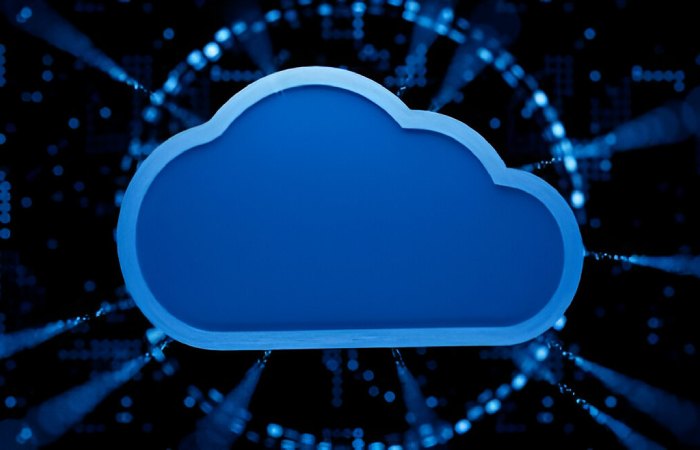Retail has changed melodramatically over the past decade. Today, shoppers don’t just buy products; they prefer a convenient and personalised experience on omnichannel platforms. Retailers are transforming their technology infrastructure to keep up, and cloud adoption is critical to this process cloud migration.
While adopting cloud migration solutions is unmatched in flexibility, scalability, and cost-effectiveness, it also comes with drawbacks, especially in today’s dynamic and fast-paced retail market. According to a recent Accenture study, 70% of data migration projects are more complex than expected. Furthermore, some go over budget or schedule.
From information silos and legacy infrastructure to downtime and compliance risks, retailers will face a variety of challenges associated with using the cloud. However, these challenges can be addressed with specialised and comprehensive cloud migration services.
Let’s begin by exploring how cloud migration can transform the retail industry by enabling leaders to allocate resources when and where they are needed dynamically.
How are Cloud Migration Services Beneficial for Retail Success?

The technology environment must keep up as retail transforms to meet growing customer demands. However, traditional IT infrastructure is not robust enough to support this customer-centric agility and responsiveness. This is where cloud transformation services come in.
Retailers worldwide are opting for cloud migration due to its numerous advantages. Cloud technologies allow retailers to upgrade inefficient legacy systems and integrate diverse sales channels. They also facilitate the implementation of real-time analytics without the limitations of on-premises infrastructure. Let’s look at how retailers can achieve this and what benefits they can gain by migrating to the cloud:
- Seamless scalability: Manage sales periods like the holidays with resiliency and scale accordingly without needing infrastructure.
- Faster time to market: Quickly launch new features, promotions, or entire digital stores to stay ahead of the competition.
- Single view of the customer: Break down data silos and deliver a holistic, personalised experience across all touchpoints, including websites, social media, and email campaigns.
- Efficient operations: Automate critical processes like inventory management, order processing, and CRM synchronisation.
- Cost savings: Move from costly on-premises environments to a flexible, pay-as-you-grow option.
Ultimately, it’s not so much about transformation as it is about ensuring your technology arsenal keeps pace with the scale of today’s retail.
Common Challenges in Adopting Retail Cloud Migration Solutions
Migrating to the cloud is a goldmine of opportunities, but it also has its drawbacks:
1. Legacy Systems and Technical Debt
All retailers still use legacy ERP systems, point-of-sale applications, and mainframe code. These legacy systems were not designed to run in the cloud. Reimplementing or refactoring them is time-consuming, expensive, and can disrupt ongoing operations.
Solution: Instead of a complete overhaul, implement a phased transformation. Use cloud readiness assessment tools to determine what can be migrated, restructured, or refactored. This minimises the risk of a major phased upgrade of core systems.
2. Data Silos and Inconsistencies
Customer information is often stored across multiple platforms, such as CRMs, loyalty programs, inventory management systems, and e-commerce sites. Distributed data migration can lead to inconsistencies, redundancies, and process distortions.
Solution: Invest in data management and cleansing before migration. Use ETL (extract, transform, and load) pipelines and AI tools to aggregate, validate, and enrich data. Preconfigured connectors for major retail platforms, as part of cloud migration solutions, will simplify the process.
3. Downtime and Business Disruption
For businesses, a few minutes of downtime can result in lost sales, dissatisfied customers, and damage to brand reputation. A failed or delayed migration can cause disruptions to payment gateways, inventory tracking systems, or POS systems.
Solution: Implement a hybrid or parallel migration strategy to avoid sudden migrations. Disruptions and downtime occur when systems experience network issues, data inconsistencies, software issues, and hardware failures. It is essential to prevent these issues and keep systems running parallel until the cloud infrastructure is stable. Some cloud migration methods include implementing staging environments where retailers can test critical workflows before implementation.
4. Compliance and Data Privacy
Retailers manage large amounts of their customers’ sensitive information. From California’s CCPA to the European GDPR, data privacy requirements are becoming increasingly stringent. The cloud migration cycle brings significant compliance concerns.
Solution: Choose cloud transformation services and partners that offer built-in compliance certifications (e.g., SOC 2, PCI-DSS, or ISO 27001). Use cloud migration tools with automated policy enforcement and data encryption during migration.
5. Skills Gap and Change Management
Cloud migration is not only an IT challenge, but also a cultural one. Most retail IT departments lack experience with cloud applications and DevOps methodologies. This can lead to delays, configuration errors, and inefficient use of cloud resources.
Solution: Empower your internal teams with training workshops and certifications. Engage vendors to learn with you, offering cloud migration services, ongoing support and training. Embrace a DevOps culture by bringing together development, operations, and business teams.
Strategies to Leverage Cloud Migration Solutions

The question is no longer “will you adopt a cloud migration strategy?” but “when and how effectively?” Here are some strategies retailers can use to minimise risk and maximise reappearance on investment (ROI):
1. Begin with a Cloud Readiness Assessment
Before migrating, assess your application dependencies and your business objectives. Conduct a thorough audit to understand what should be migrated first and what can be left local for now.
2. Choose a Multi-Cloud or Hybrid Strategy
Not all workloads need to be hosted in the same cloud. Some retailers benefit from deploying AWS for analytics, Azure for business applications, and a private cloud for critical data. The goal is to achieve the best performance and value across the stack.
3. Prioritise Customer-Centric Outcomes
Consider the end user at every stage. Build the transition based on customer experience, not KPIs. Integrate a faster checkout process, greater personalisation, and real-time inventory tracking to keep customers returning to your store.
4. Automate Where Possible
Human-assisted migration is error-prone and time-consuming. The best cloud transformation services now offer automated capabilities for workload mapping, configuration management, and continuous testing.
Final Thoughts
Cloud migration is an incredible tool for transforming retail businesses, but also challenging. From legacy infrastructure to regulatory compliance issues, the reality is that with thoughtful planning and customised cloud migration services, retailers can achieve new levels of agility, scalability, and customer satisfaction.
And for those retailers ready to think beyond “one-size-fits-all” strategies, comprehensive cloud solutions offer the skills, solutions, and expertise needed to ensure their business is fully future-proofed. The retail landscape is changing. The question is: “Are you ready to adapt?”

